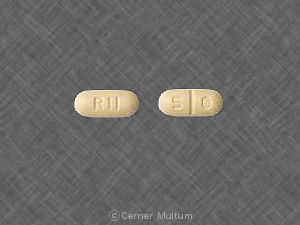Revia Disease Interactions
There are 2 disease interactions with Revia (naltrexone).
Naltrexone (applies to Revia) hepatic dysfunction
Major Potential Hazard, High plausibility. Applicable conditions: Liver Disease
The use of naltrexone is contraindicated in patients with active hepatitis or hepatic failure. Naltrexone has caused direct hepatocellular injury when administered at doses less than or equal to 5 times the recommended once daily 50 mg dose. Therapy with naltrexone should be administered cautiously in patients with active hepatic disease. Clinical monitoring of transaminase levels prior to and during naltrexone therapy is recommended.
References (3)
- Verebey K, Volavka J, Mule SJ, Resnick RB (1976) "Naltrexone: disposition, metabolism, and effects after acute and chronic dosing." Clin Pharmacol Ther, 20, p. 315-28
- (2001) "Product Information. ReVia (naltrexone)." DuPont Pharmaceuticals
- Volpicelli JR, Volpicelli LA, Obrien CP (1995) "Medical management of alcohol dependence: clinical use and limitations of naltrexone treatment." Alcohol Alcohol, 30, p. 789-98
Opiate antagonists (applies to Revia) hepatic/renal dysfunction
Moderate Potential Hazard, Moderate plausibility. Applicable conditions: Liver Disease
Opiate antagonists are metabolized by the liver (naltrexone to an active metabolite) and eliminated by the kidney. Hepatic and renal impairment may reduce the metabolism and clearance of opiate antagonists. Dosage adjustment for single dose administration is not necessary, however, repeated doses in patients with hepatic and/or renal dysfunction may require adjustment.
References (1)
- (2001) "Product Information. Revex (nalmefene)." OHMEDA
Switch to consumer interaction data
Revia drug interactions
There are 355 drug interactions with Revia (naltrexone).
Revia alcohol/food interactions
There is 1 alcohol/food interaction with Revia (naltrexone).
More about Revia (naltrexone)
- Revia consumer information
- Check interactions
- Compare alternatives
- Reviews (8)
- Drug images
- Side effects
- Dosage information
- During pregnancy
- Drug class: antidotes
- Breastfeeding
Related treatment guides
Drug Interaction Classification
| Highly clinically significant. Avoid combinations; the risk of the interaction outweighs the benefit. | |
| Moderately clinically significant. Usually avoid combinations; use it only under special circumstances. | |
| Minimally clinically significant. Minimize risk; assess risk and consider an alternative drug, take steps to circumvent the interaction risk and/or institute a monitoring plan. | |
| No interaction information available. |
See also:
Further information
Always consult your healthcare provider to ensure the information displayed on this page applies to your personal circumstances.


